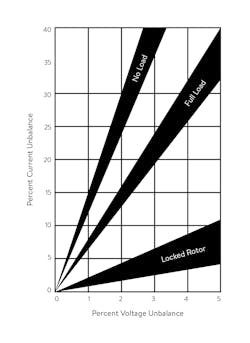Automation Hack: A Safer Way to Save Your Motors
Motors are at the core of nearly every industrial automation system. Whether it’s in the process industries moving fluid with pumps, or in discrete manufacturing to mechanize machinery, or simply to keep product moving along a conveyor, motors are everywhere in industry.
One of the most common motor types found in industry is the three-phase motor. Considering their prevalence, keeping these three-phase motors running optimally is an important task for industrial engineers.
A major operating concern is the effect of unbalanced voltages on these motors. To manage this, most experts recommend monitoring the voltage balance of all critical motors.
To reliably measure motor voltages you need to access the motor terminals inside the motor junction box, while the motor is operating at normal load. This is where the help of a useful automation hack can come in handy.
Robert L. Fischer of Fischer Technical, says the time required to measure those voltages, coupled with the risk of serious injury or death, far outweigh any reward of finding a significant unbalance. Fischer is a physicist, electrical engineer (P.E.), and college professor with over 30 years of reliability experience in chemical plants, refineries, and heavy steel manufacturing.
Adding complexity to this voltage measurement issue is the fact that, if the voltages are measured anywhere else outside of the junction box, voltage drops resulting from loose connections or moisture inside the junction box may not be found, says Fischer.
To avoid the inherent danger of measuring motor voltages inside the motor junction box while the motor is operating at normal load, Fischer suggests measuring motor current as an easier and safer way to get the information you need to monitor voltage balance.
“Currents can be measured with an insulated clamp-on ammeter anywhere in the motor circuit, even in the motor starter enclosure,” says Fischer. “And, while additional voltage drops can occur anywhere downstream of a voltage measurement, currents are always the same at every point in a series circuit—all the way from the motor starter line terminal through the motor windings.”
Fischer adds that current measurements can provide additional dividends by picking up unbalances caused by shorted or unequal turns in motor windings, lamination damage, and uneven gaps between stator iron and rotors.
“Measure your motor currents, calculate the current unbalance, then plot your specific motor conditions on a chart like the one accompanying this article to estimate voltage unbalance,” says Fischer.
As a final note, Fischer reminds us that NEMA suggests derating motors operating at more than 1 percent voltage unbalance and not running motors with more than 5 percent unbalance.
If you have an automation hack you’d like to share with Automation World, please send your information to David Greenfield, Director of Content, at [email protected].
About the Author
David Greenfield, editor in chief
Editor in Chief

Leaders relevant to this article:
